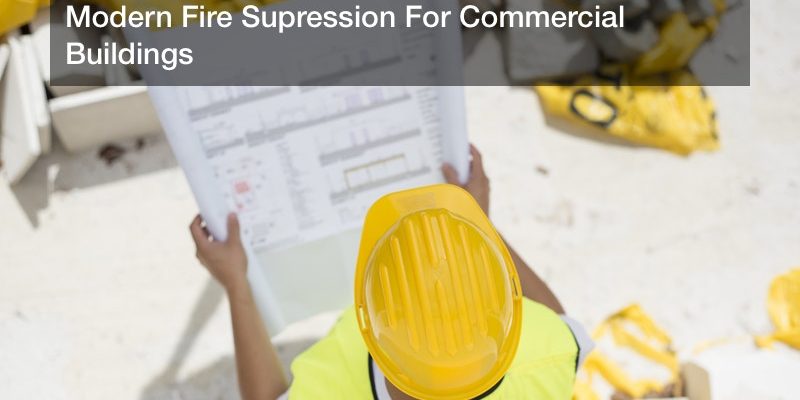
A variety of hazards may threaten a commercial building or the lives inside it, from flood waters to an earthquake to the powerful winds and flying debris of tornadoes and hurricanes. Some of these hazards only exist in certain areas of the United States, but one hazard is universal: fire. Many commercial structures today suffer fire damage from careless accidents, often electrical fires, and in decades past, constant smoking indoors would also cause fires from lit tobacco. This is one reason why most commercial buildings today don’t allow smoking, but still, fires are common, damaging lives and property alike. Fortunately, today’s various types of fire suppression systems are ready to help, and fire suppression definitions are broad. One fire suppression definition is the topic of fire alarms, and another fire suppression definition can describe the sprinklers installed inside the structure. All this can protect property and lives alike.
Why Fires Happen
Many statistics are kept to track how often commercial building fires happen, and why and how much they cost. In 2016, for example, around 29.9% of non-residential fires were related to cooking, and 11% were due to carelessness, such as dropped matches or lighters. Often, fires are caused by damaged or frayed electrical cords whose hot inner wires touch carpets, drapes, or papers and set them on fire. This is why electrical cords should always be checked and repaired if need be, so the wires aren’t exposed. And in 2017, one structure fire began every 63 seconds, and a home fire every 88 seconds. What is more, the National Fire Protection Association (NFPA) said that in that year, 499,000 structures were damaged by fire across the United States. That is a 4.9% increase from 2016’s total of 475,500 fires. All this and more is why fire sprinkler system installation and fire alarm installation is vital for any structure, old or new.
Fire Alarms
While fire sprinklers put out fires, it is the alarms that alert all building occupants to the threat and allow them to evacuate on time. Such alarms are connected to smoke detectors, and once they go off, wall-mounted alarms will give off loud sounds that can be heard anywhere in the building. They also have distinct flashing lights for the benefit of the hard-of-hearing. These alarms also send messages to local fire departments, so they may arrive as soon as possible without anyone needing to call them by phone. Ideally, these alarms are set up so a person can hear them no matter where they are inside the structure, and a new building’s fire alarms will be tested before it’s opened for business. Many strict fire safety codes exist for good reason, after all. And when an older building is purchased for commercial use, the new owners must have all fire safety features carefully checked, including alarms. Any faulty, old, or missing hardware must be replaced at once, courtesy of contractors whom the new building manager may hire.
Automatic Fire Sprinkler Design
This fire suppression definition is an old one; fire sprinklers date back to 1874, though today’s systems are of course more advanced. Fire suppression software and other engineering tools allow today’s designers to create ever more effective fire sprinkler systems to install in any building for maximum effectiveness. Fire sprinkler heads can be found all over a given building’s floors, and they are all connected to pipes that carry their supply of water. Once the fire alarms go off, the system will turn on automatically, and spray water in any affected area. Many advanced fire sprinklers will only spray water in the fire’s location, to conserve water and prevent unnecessary water damage elsewhere. Other systems might spray the entire building, though.
As with fire alarms, these sprinklers must be arranged correctly in the building so that they have no blind spots, and any damaged or malfunctioning sprinkler heads must be replaced at once. An older building’s sprinkler system might be worn out or inefficient, and the new owner must hire contractors to update or replace the sprinkler system to satisfy all local fire safety codes. In addition, all fire exit doors must be clearly marked and never obstructed by any objects, and fire extinguishers must be up to date and easily accessible.
